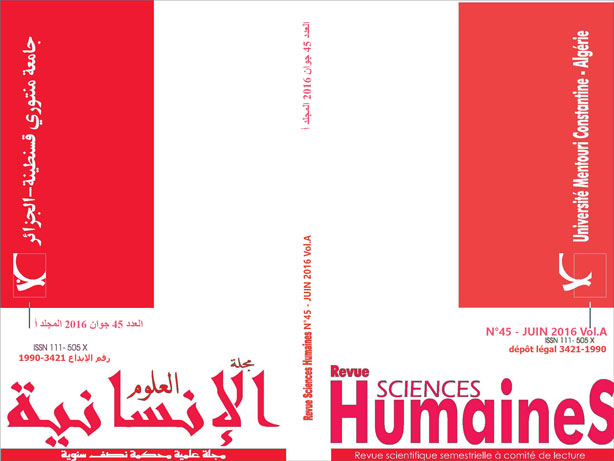Cohesive Devices in the United Nations Arabic Texts and their English Translations: A Corpus-based Study
Keywords:
Cohesive Devices, United Nations, Arabic Text, English Translations, Corpus-based StudyAbstract
This paper examines one essential aspect of equivalence in translation: textual cohesion. It aims to contrast Arabic and English cohesive devices in some United Nations texts, find out how they are interpreted as equivalents and examine the regularity in shifting cohesion. A parallel corpus of texts of 15 Arabic texts and their English translation counterparts are selected and the distribution of their cohesive devices is analysed. Using computer software, the use of cohesive devices is compared. Findings reveal that Arabic and English have more similarities than differences in terms of the cohesive devices used though there are obvious differences in the frequency of their occurrence. The similarities are significantly preserved for the purpose of accurateness, transparency and formality that characterise the language of legal texts.Downloads
References
- Baker, M. (1993). Corpus linguistics and translation studies - implications and applications. In M. Baker, G. Francis, & E. Tognini-Bonelli (Ed.), Text and technology: In honour of John Sinclair. (pp.233-250). Amsterdam: John Benjamins.
- Newmark, P. (1987). A textbook of translation. London: Prentice-Hall International.
- Baker, M. (1992). In other words: A coursebook on translation. London, England: Routledge.
- Halliday, M.A.K., & R, Hasan. (1976). Cohesion in English. London: Longman.
- De Beaugrande, R.A., & Dressler, W. (1981). Introduction to text linguistics .London: Longman.
- Hatim, B., & Mason, I. (1990). Discourse and the translator. London: Longman.
- Blum-kulka, S. (1986). Shifts of cohesion and coherence in translation. In J. House & S. Blum-kulka (Eds.), Interlingual and intercultural communication: Discourse and cognition in translation and second language acquisition studies. (pp.17-35). Tübingen: Gunter Narr Verlag.
- Halliday, M. A. K. (1994). An Introduction to functional grammar. China: Edward Arnold Publisher.
- De Beaugrande, R.A., & Dressler, W. (2002). Introduction to text linguistics .London: Longman. A Digital Printing. Retrieved from: http://beaugrande.com/introduction_to_text_linguistics.htm
- James, C. (1980). Contrastive analysis. London: Longman.
- Teubert, W. (2004). Language and corpus linguistics. In M.A.K. Halliday, W.Teubert, C. Yallop & A. Čermáková, Lexicology and corpus linguistics. (pp.73-112). London: Continuum.
- Teubert, W. (2005). My version of corpus linguistics. International Journal of Corpus Linguistics. 10 (1), 1-13.
- Ebeling, J. (1998). Contrastive linguistics, translation, and parallel corpora .Meta: Translators’ Journal, 43(4), 602-615.
- Johansson, S. (1998). On the role of corpora in cross-linguistic research. In S. Johansson & S. Oksefjell (Ed.), Corpora and cross-linguistic research: Theory, method, and case studies. (pp.3-24).Amsterdam: Rodopi.
- Mauranen, A. (1999). Will 'translationese' ruin a contrastive study?. Languages in Contrast. 2 (2), 161-185.
- Teubert,W. (1996). Comparable or parallel corpora?. International Journal of Lexicography. 9 (3), 238-264.
- Zanettin, F. (2011). Translation and corpus design. SYNAPS- A Journal of Professional Communication. 26 /2011.
- Zanettin, F. (2000). Parallel corpora in translation studies: Issues in corpus design and analysis. In M. Olohan (Ed.), Intercultural faultlines: Research models in translation studies I textual and cognitive Aspects. (pp.105-118).Manchester: St Jerome.
- Laviosa, S. (2002). Corpus-based translation studies: Theory, findings, applications. Amsterdam: Rodopi.
- Fernandes, L. (2006). Corpora in translation studies: Revisiting Baker’s typology. Fragmentos. 30, 087-095.
- Johansson, S. (2003). Reflections on corpora and their uses in cross-linguistic research. In F., Zanettin, S., Bernardini, & D., Stewart. Corpora in Translator Education. (pp.135-144). New York: Routledge.
- Biel, Ł. (2009). Corpus-based studies of legal language for translation purposes: Methodological and practical potential. In C. Heine & J. Engberg (Eds.) Reconceptualizing LSP. Online Proceedings of the XVII European LSP Symposium 2009, Aarhus 2010. (pp1-15).
- Baker, M. (1995). Corpora in translation studies: An overview and some suggestions for future research. Target. 7(2), 223–243. Amsterdam: John Benjamin’s.
- McEnery, T., Xiao, R., & Tono, Y. (2006). Corpus-based language studies: An advanced resource book. London: Routledge.
- Granger,S. (1996). From CA to CIA and back: An integrated approach to computerized bilingual corpora and learner corpora. In Ajmer et al., (Eds) Languages in Contrast, 37-51.
- Lauridsen, K. (1996). Text corpora and contrastive linguistics: Which type of corpus for which type of analysis?. In K. Aijmer, B. Altenberg & M. Johannson (Eds.), Languages in contrast. Papers from a Symposium on Text-based Cross Linguistic Studies. (pp.63-72).Lund: Lund University Press.
- Barlow, M. (1996). Analysing parallel texts with ParaConc. In Proceedings from ALLC- ACH, University of Bergen, Norway. Quoted in P. Danielsson, (2003). Units of meaning in translation — how to make real use of corpus evidence. Translating and the Computer. London: Aslib.
- Anthony, L. (2011). AntConc Build 3.2.4. [Free computer Software Tool]. Centre for English language education in science and engineering. Waseda University: Tokyo. Retrieved February 25, 2014 from http://www.antlab.sci.waseda.ac.jp/software.html
- Anthony, L. (2013). AntConc Build 3.4.1. [Free Computer Software Tool]. Centre for English language education in science and engineering; Waseda University: Tokyo. Retrieved February 25, 2014 from http://www.antlab.sci.waseda.ac.jp/software.html
- Dudley-Evans, R., & Swales, J. (1980). Study modes and students from the Middle East. ELT documents log. The British Council: London
- Al-Jaber, A.M. (1987).Cohesion in text differentiation: A study of English and Arabic. Doctoral dissertation. University of Aston, Birmingham.
- Williams, M.P. (1983). A problem of cohesion. In J. Swales & H. Mustafa (Ed.) English for Specific Purposes. (pp.118-128). University of Aston, Birmingham.
- Karakira, S. (1997). Lexis versus text: The case for translating English legal texts into Arabic. Master dissertation. The University of Western Sydney, Australia.
- Wright, L., & Hope, J. (2005). Stylistics: A practical coursebook. London: Routledge.
- Koch, B.J. (1981). Repetition in discourse: Cohesion and persuasion in Arabic argumentative prose. Unpublished PhD dissertation. University of Michigan
- Al-Qahtani, D.M. (2004). Semantic Valence of Arabic Verbs. Beirut, Lebanon: Libraire du Liban Publishers.
















